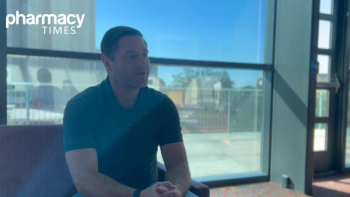
Revived Interest in Medical Marijuana for Epilepsy Treatment
Many patients with epilepsy have tried medical marijuana, despite few studies being conducted.
Before it was prohibited in the 20th century, cannabis was used to treat seizures and other conditions. Since medical marijuana is increasingly becoming legalized, research regarding the treatment has grown.
An assessment of the potential of cannabinoids for the treatment of epilepsy was recently published in Epilepsy & Behaviors.
"There is an enormous dissociation between the widespread use of cannabis-based therapies to treat diverse epilepsies and our understanding about the efficacy and safety of different cannabinoids in treating different epilepsy syndromes,” the authors wrote.
Since a driver behind the legalization of medical marijuana has been patients and advocacy groups, the authors aim to address concerns and gaps in knowledge to develop a curriculum.
The in-depth assessment provides an overview for healthcare providers that includes: historical aspects of cannabis use in epilepsy; cannabis botany; aspects of the endocannabinoid system related to epilepsy; pharmacology of cannabinoids; trial data of cannabinoid use for epilepsy; safety data; potential brain effects of cannabinoids; and the legal aspects of cannabis production, distribution, and use, according to the study.
The authors noted that non-psychoactive cannabidiol (CBD) has been approved to treat pediatric epilepsy in Israel; however, it was only approved after more than 35 years of clinical studies. The studies in the United States have been significantly limited due to federal regulations.
"I expect that over the next decade we shall see major advances both in the medical-scientific and the treatment aspects of epilepsy with the help of CBD and related cannabinoids," said study author Raphael Mechoulam, PhD.
Pharmaceutical manufacturers have faced the challenge of translating plant-based drugs to clinical use. The authors reviewed how the United States and the UK have addressed the issue of securing medically pure cannabinoids.
The authors suggest that media coverage of
In states like Washington and California, artisanal cannabis preparations are not subject to state regulations, which may lead to unintended consequences. Due to these preparations, the treatment of pediatric epilepsy may be more complicated.
The authors also discussed how social media and word of mouth can influence interest in medical marijuana for patients with epilepsy. Of the 976 responses, 60% were adults with epilepsy and 40% were children with the condition.
Of all patients included, 14% were currently or had previously used cannabis-based products for epilepsy treatment.
Of the children included, approximately 13% had used the products, with 71% of parents reporting that the drugs improved their child’s condition, according to the study. More than half of parents also reported that after starting cannabis treatments, their child required less use of anti-epileptic drugs.
While medical cannabis has been legalized in nearly half of the United States, with another 17 states allowing for products that are high in CBD and low in tetrahydrocannabinol, there have yet to be any FDA approvals for the drugs.
"We hope these articles help stimulate greater understanding and more importantly, stimulate more studies to scientifically define the potential benefits and harms of cannabis-based therapies for epilepsy," said study authors Jerzy Szaflarski, MD, PhD, and Orrin Devinsky, MD. "We need to develop a curriculum to address the rapidly changing scientific and regulatory landscape surrounding the medical use of cannabis and cannabinoids."
Newsletter
Stay informed on drug updates, treatment guidelines, and pharmacy practice trends—subscribe to Pharmacy Times for weekly clinical insights.





















































































































































































































